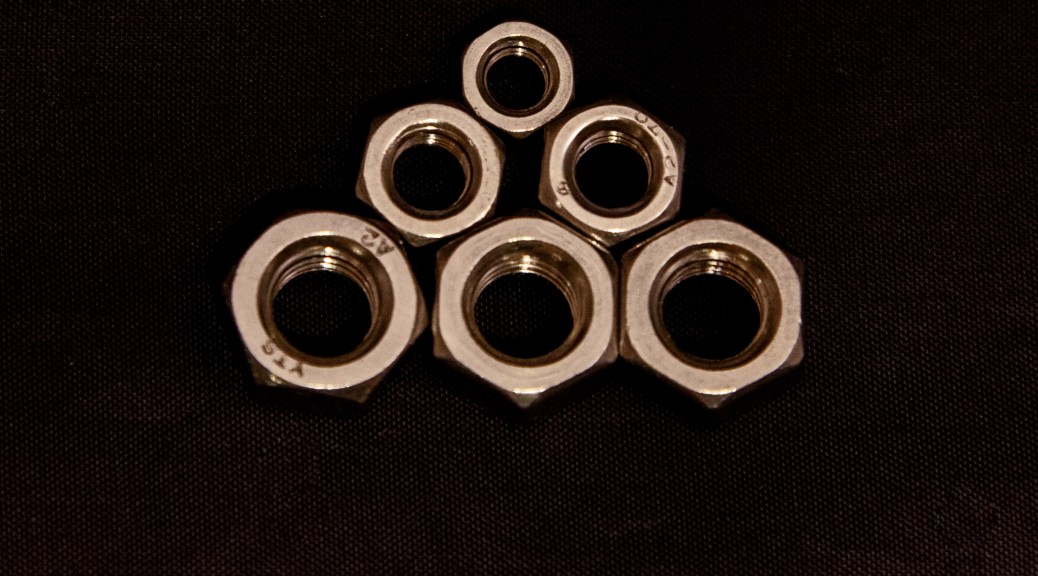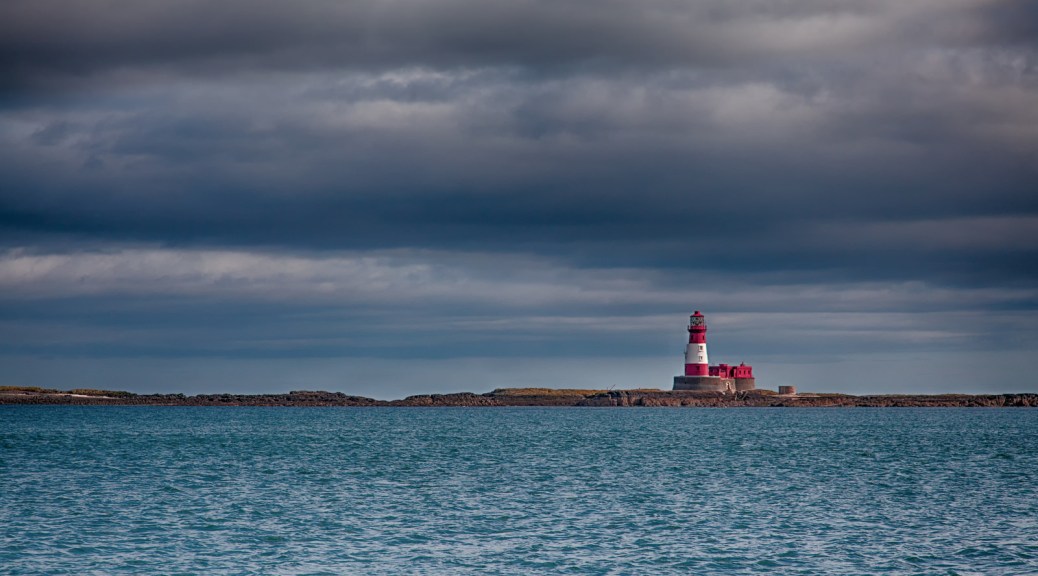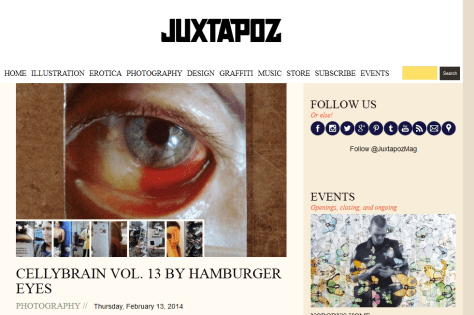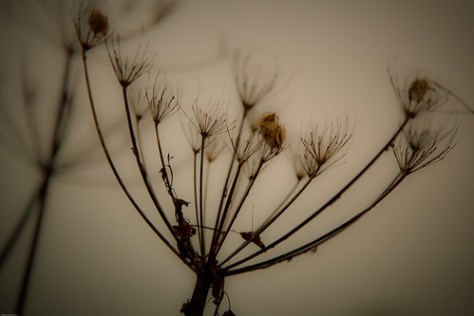In December 2012 I went to the Seduced by Art exhibition at the National Gallery. The exhibition explores early photography from the mid-19th century and the most exciting contemporary photographs, alongside historical painting. It takes a look at how photographers use fine art traditions, including Old Master painting, to explore and justify the possibilities of their art. The comparisons were quite strikingly accurate even considering modern styles and techniques. 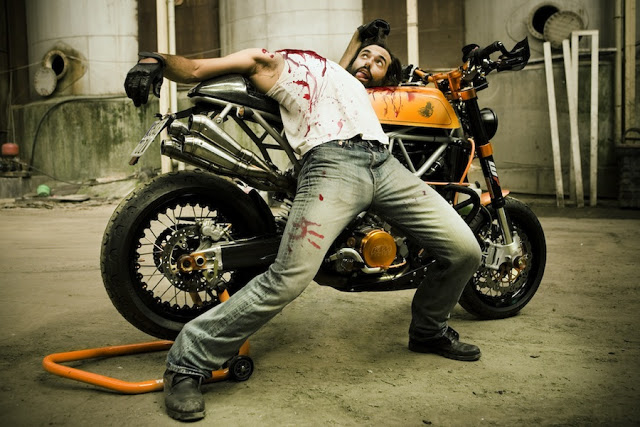 I have two main interest in life photography and motorcycles and there are a lot of us out there , based on the number of blogs I find that are about this pairing. So today I found a blog showcasing a photographer combining not only photography and motorcycles but adding into the mix “Old Master” style paintings – have a look here and some more work of Madrid based photographer Kristina Fender.
I have two main interest in life photography and motorcycles and there are a lot of us out there , based on the number of blogs I find that are about this pairing. So today I found a blog showcasing a photographer combining not only photography and motorcycles but adding into the mix “Old Master” style paintings – have a look here and some more work of Madrid based photographer Kristina Fender.
Tag Archives: Open College of the Arts
Gestalt Law
I keep finding references to Gestalt elements in the design and composition of images.
Gestalt is a psychology term which means “unified whole”. It refers to theories of visual perception developed by German psychologists in the 1920s. These theories attempt to describe how people tend to organize visual elements into groups or unified wholes when certain principles are applied.
These principles are:
- Similarity – Similarity occurs when objects look similar to one another. People often perceive them as a group or pattern.
- Continuation – Continuation occurs when the eye is compelled to move through one object and continue to another object.
- Closure – Closure occurs when an object is incomplete or a space is not completely enclosed. If enough of the shape is indicated, people percieve the whole by filling in the missing infomation.
- Proximity – Proximity occurs when elements are placed close together. They tend to be perceived as a group.
- Figure and Ground – The eye differentiates an object form its surrounding area. a form, silhouette, or shape is naturrally perceived as figure (object), while the surrounding area is perceived as ground (background).Balancing figure and ground can make the perceived image more clear. Using unusual figure/ground relationships can add interest and sublety to an image.
Doing research for design for this section I found this presentation for website designers on Slideshare that has many items to consider as it is the same visual language to create any image;
Also these links give further outlines :
Daydreaming about the good times?
Taken from the OCA Blog – Paul Reas exhibition at retrospective “Daydreaming about the good times? – 1972 – 2012 shown at Impressions Gallery in December 2013
Juxtapoz Magazine
The Luminous Landscape
The Luminous Landscape is a site to dip in and out of for gear reviews, tutorials and of course stunning landscape photography. It’s a great study resource and a way to lose a rainy afternoon on-line but needs a wait between visits.
Strobist.com
Strobist.com blog is a fantastic resource for anyone using portable strobes (your camera flash guns or speedlights if you own a posher camera) as their primary light source, or wants to explore their creative use.
They maintain a fantastic beginners resource document called Lighting 101 which has now been updated and is available to download from this link.
The site is very US-centric in a lot of the products they advertise or recommend , but the basic knowledge base and contributed examples make up for this. The How-To’s of lighting layout and techniques are worth the effort and the numerous examples provide endless inspiration.
Lindsay Seers – Monocular
Lndsay Seers – Monocular – Derby Quad

Not strictly a photographic exhibition, more mixed media. While the artists was in Norway studying prefabricated structures when she met a man with a rare condition genetic mosaicism . This normally manifests itself as a person having eyes of different colours, usually one blue and one brown.
The installation was a tin shack , and inside there was a projection of a short film.The unamed man above was the subject of the film , the main theme being how he deals with issues he feels are due to having a half British and half Norwegian cultural heritage and identity coupled with a belief that inside him was a twin and as the story unfolds he loses an eye which transforms his inner dialogue with his “twin”.
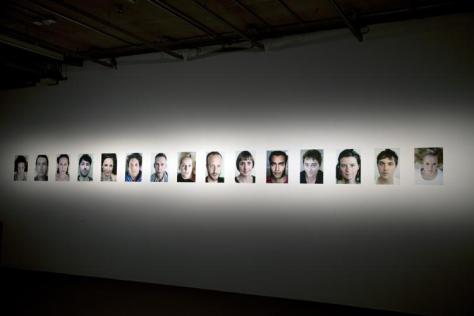
As an addition there were also a series of portraits of other people with the condition taken by the artist during research for the piece . All images taken in portrait format with the face being the main subject. The eyes were all aligned with the top third which reinforced the feeling that the subjects were all staring straight at you. Also this meant that all the eyes are aligned when the prints are displayed.
Interestingly there was not a common theme to how the subjects were posed, some were clearly laying on their backs, others standing or sitting, the backgrounds were invariably neutral.
To see more work go to :- http://www.lindsayseers.info/
Michael Wolf welcomes World Press Photo controversy – British Journal of Photography
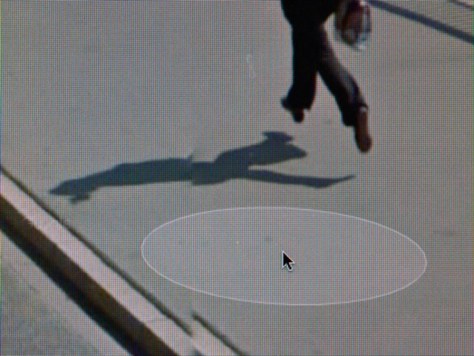
Michael Wolf uses cropping to isolate specific images and by removing some reference areas it creates a new narrative. An innocent image of someone crossing a street by cropping in close with other people. Taking this image as an example, close cropping gives a feeling of entrapment and claustrophobia as the “cast” appear to move closer together;it becomes a CCTV image of a mugging about to occur.
It’s as much about choosing the decisive moment to press the shutter as it is about placing the main components into the image to relay the new storyline the characters have to follow. As such I consider this to be photography of the street and of equal value as any street photography.
Bruce Gilden goes "head on" in Derby
This is a link to a trailer for great video by Olivier Laurent currently being shown at the Derby Museum and Art Gallery as part of the Format 11 international photography festival. This years is dedicated to Street Photography.
Continue reading Bruce Gilden goes "head on" in Derby
Attenborough Nature Reserve New Year’s Day 2011
New Year new blog.
This blog will be a record of my experimentation in photography and hopefully my record of work for a BA course in photography with the OCA.
I am combining this with my new Flickr account, to also showcase some of my work. In the past the images I have thought to be my best have become lost in the melee of the joint Flickr account which we set up years ago to share our holiday and general pictures with friends and family.
I took advantage of the sales to buy a new tool, a Canon EOS 5D MKII to ensure I have access to a full frame imaging tool again. This means that Jules now has full access to the EOS 400D which was the workhorse D-SLR, and so she has now set up her own Flickr account as well to showcase her talents.
New year , new blog, new start…

